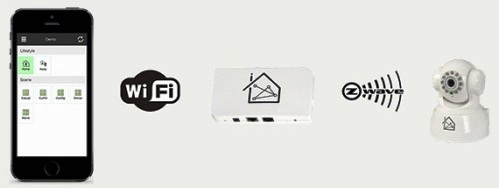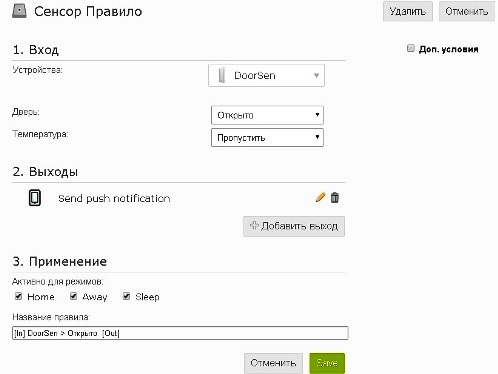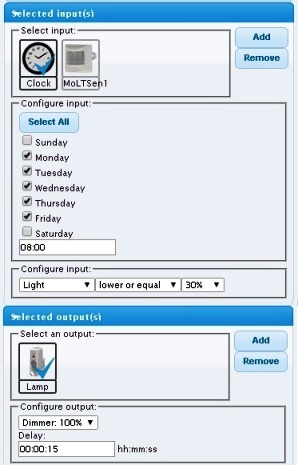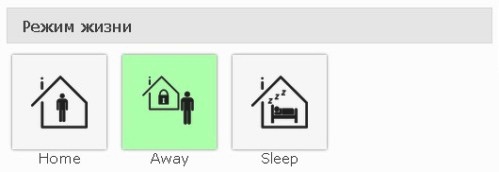Categories: Featured Articles » Home automation
Number of views: 14634
Comments on the article: 2
About the technology and principles of Smart Home operation using the BeNext system as an example
 In this article I will share my experience and try to talk about the basics and basic principles of building a wireless budget smart home system.
In this article I will share my experience and try to talk about the basics and basic principles of building a wireless budget smart home system.
System selection
Not so long ago I had an idea to install smart home system.
In the already built, residential apartment, I did not want to break, drill and shatter. Therefore, the choice fell on wireless solutions.
The market now has a lot (according to information from the High-Tech Building 2014 over the past year the market has grown by ~ 30%) proposals for the installation of turnkey multifunctional elite systems ’. But, firstly, they, as a rule, have a high price (hundreds of thousands of rubles), and secondly, they are closed systems that do not allow the addition of third-party devices. And in general, such systems are not adapted for repair, modernization and expansion by the user.
I wanted to find something budgetary, with the ability to independently configure the system and add new devices, without involving qualified specialists.
As a result of searching and comparing available technologies, it turned out to be the most suitable for the required criteria Z-Wave technology. She is the leader among similar systems in the DIY market (Do It Yourself - Do It Yourself). Exactly what is needed!
The main element of a smart home is the controller, this is the central node of the entire system. The most popular of them today: Vera, Fibaro, Zipato, BeNext.
The cheapest of all and attracted my attention was BeNext controller. Like the rest, he had a web-based management interface (in Russian), free smartphone applications, and a wide range of devices (instructions in Russian are also available for devices).
System structure
The scheme for building a wireless home system is generally the same for all manufacturers.
The main element is the Controller.
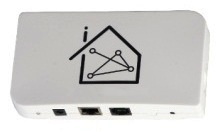
Its functions:
1. Providing the user with a control interface and receiving instructions from him for execution;
2. Storage of rules, scenarios (more about them below) and storage of information about all devices in the system.
3. Communication with all remote actuators (sending commands to them) and sensors (receiving current values from them).
The general scheme of work: the user sends commands (or saves them as rules) to the controller through the application or the web interface, which, in turn, sends commands to devices.
In the BeNext system, you can manage locally through the application from a smartphone and tablet, or remotely via a cloud web service.
Devices are added to the system by a simple procedure - using the interface on the controller, the search mode for new devices is activated. And on the device, the mode of adding to the network is turned on (more details can be found in the instructions for the device). After that, the device will be added to a single network and will be available for management.
System operation
Direct device management - each device has its own set of functions and actions that it can perform. From sensors we can receive their current indicators, and transmit control commands to actuators.
Rules (Rules) - is the ability to perform actions automatically without human intervention when the specified conditions are met.
For each rule, you always configure the Input parameter (Input) - the condition for the rule to trigger, and the Output parameter (Output) - the action that will be performed.
For example - if the door sensor has triggered, then send a push notification to the phone.
To create trickier rules with several conditions, BeNext has an advanced rules editor.
For example, this option is from Monday to Friday at 8:00 a.m., if the brightness sensor is less than or equal to 30%, then turn on the lamp at 100% brightness.
Life mode (Lifestyle) - each rule can be associated with a mode, then it will be executed only if the system is in this mode. The set of modes in the BeNext system is fixed: Home, Away, Sleep. The current mode is switched by the user himself - for example, leaving home you can turn on Away mode, and before going to bed, turn on Sleep mode.
Scenes is a way to quickly perform several actions at once with one click. The user selects which actuators will accept this or that state. After that, the scene is available for manual activation through the control system, or can be used to create the rule.
Alexey Kazarin
See also at e.imadeself.com
:

